
One of Peru’s most sought-after travel destinations is located in the southern coastal valleys of Peru about six hours from Lima . The small colonial-style town of Nazca is home to one of the world’s greatest mysteries: The Nazca Lines . The lines are a series of enormous and peculiar ancient designs that were etched in the ground more than 2,000 years ago. The meaning of the lines are still unknown, but experts continue to come up with theories.
These fascinating geoglyphs etched into the deserts of Peru offer more questions than answers. Spread across an incredible 50 miles of high and arid plateau rock, the Nazca Lines consist of more than 800 scratched straight lines, 300 geometric figures, and some truly bewildering stylized animal and plant drawings. They are covered with ferruginous sand and gravel that acquired a dark patina from weathering.
Scientists, mathematicians and archaeologists have been studying the purpose of the Nazca Lines since the 1920s, but there isn’t enough conclusive evidence to determine the exact significance of the lines. Theories have been made connecting their meaning to everything from textiles and agriculture to aliens and stars.
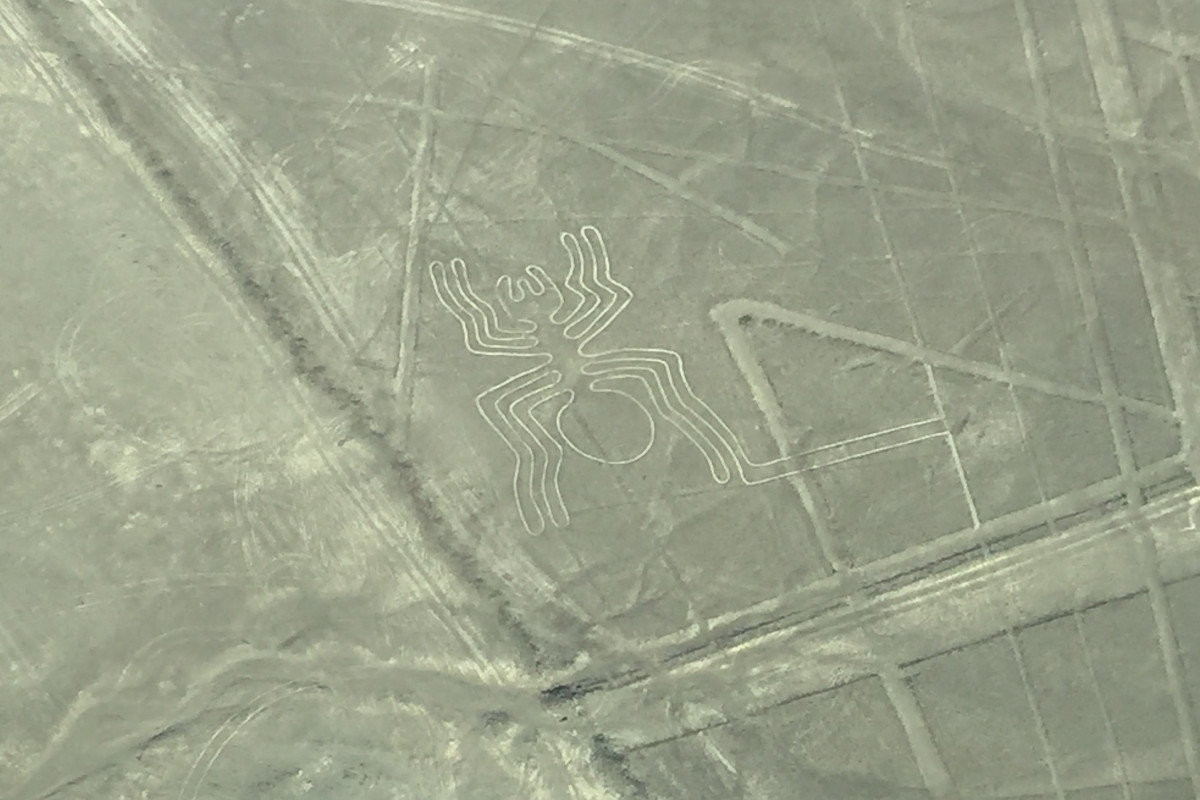
Spider Nazca Line. Photo by Adriana Proaño.
The Nazca Lines were created between 500 BCE and 500 CE. It is believed that the majority were created by the ancient Nazca people (900-200 BCE), hence the name, but it’s been found that some lines predate even them. The etchings were discovered by Peruvian archaeologist Toribio Mejia Xesspe in 1927 who believed the lines to be part of an ancient sacred road system.
It wasn’t until decades after Xesspe’s discovery that the Nazca Lines were seen from an aerial view to reveal their immensity and symbolic shapes. This exploration was led by Paul Kosok, an American professor of Long Island University, who flew his small aircraft over the lines in 1940-1941. The strange shapes suggested that the lines may have been more than a typical roadway. In 1994, the Nazca Lines were designated as a UNESCO World Heritage Site and researchers continue discovering new ones to this day.
Nazca Tours:
The origin continues to be disputed, but the Nazca Lines are thought to have been made by three different waves of pre-Inca cultures: the Paracas people (900-200 BC), the Nazca civilization (200 BC – AD 600) and the Huari (AD 630). As the name indicates, the majority of the lines are credited to the Nazca people. Some alternative theorists believe them to be created by extraterrestrials. Needless to say, the Nazca Lines have kept archaeologists guessing for the past few decades. The sheer size and precision is mind boggling.
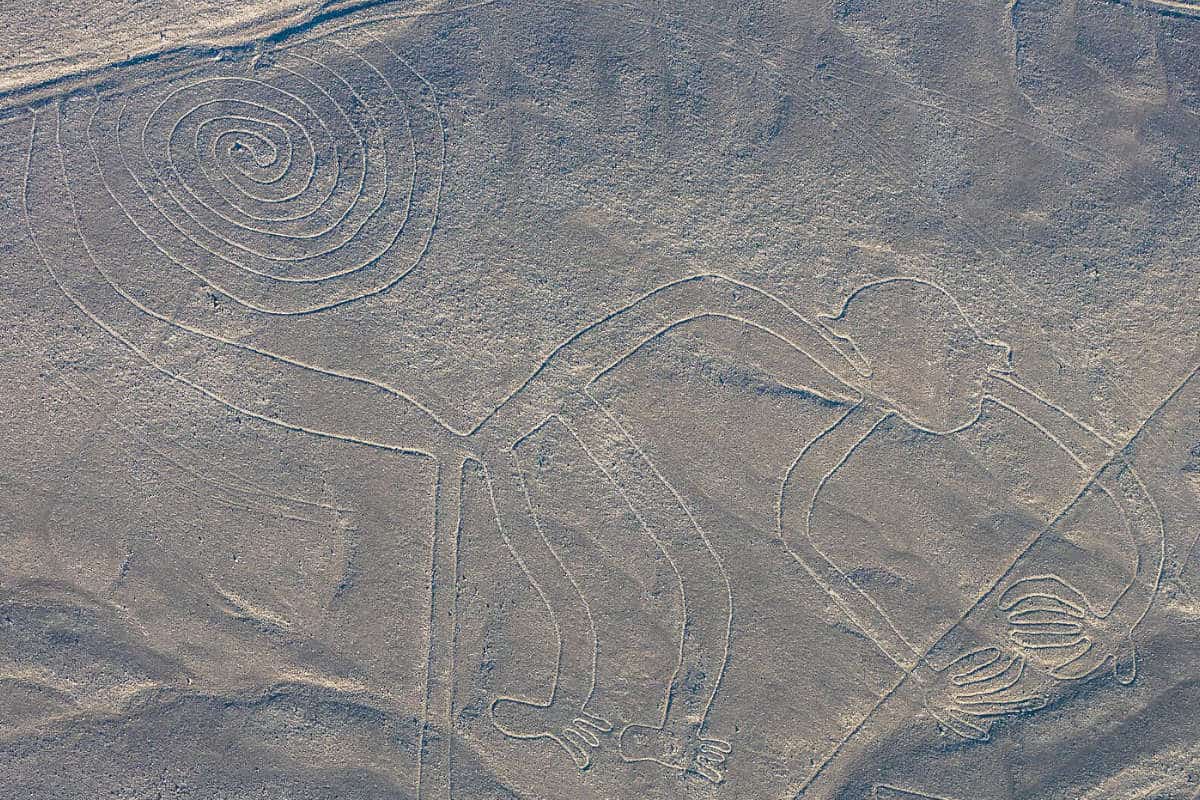
Monkey geoglyph. Image: Líneas de Nazca, Nazca, Perú, 2015-07-29, DD 49.JPG by Diego Delso is licensed under CC-BY-SA . Compressed and resized.
There are many differing theories about what the Nazca Lines mean. One theory is that they were a way to be seen by deities and gods in the heavens. Another, by professor Paul Kosok and archaeologist Maria Reiche, declares the lines an astronomical observatory for solstices and other celestial events. Reiche also believed that the shapes correlated to different constellations. Swiss historian Henri Stierlin believed them to have played a role in the fabrication of ancient textiles. There are even many people — like author and ancient astronaut theorist Erich von Daniken — who believe that the lines served as an alien landing strip.
Currently, the most accepted theory, originally suggested by archaeologist Johan Reinhard, is the lines related to ritual practices for water. In a desert, water is a precious commodity and necessary for crops to grow and civilizations to thrive. Reinhard believed these were sacred paths leading to ceremonial sites where water deities can be worshipped. Hydrogeologist Stephen Mabee and archeologist Donald Proulx hypothesized that the lines literally pointed to water sources and marked groundwater supplies. Though no one theory is accepted as fact, many conclude that the lines were perhaps multifunctional. It is possible that certain areas related to agriculture and water and others celestial observation and religious use.
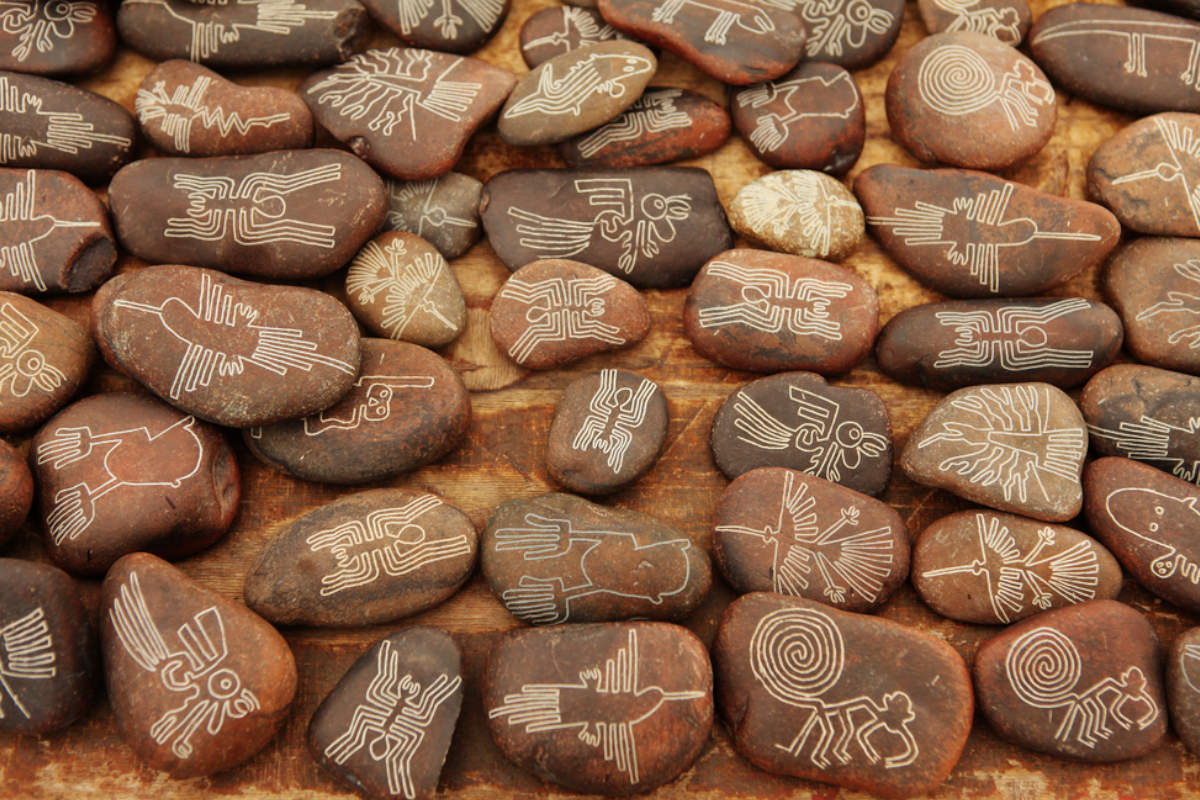
Nazca Lines keepsake.
Time of year . Nazca is really a year-round destination. You can go any month and it’s likely you’ll encounter clear desert skies. However, Nazca’s high season is between December and March, Peru’s summer months. This is During this time you’ll find the least moisture and the warmest temperatures on the coast. Do keep in mind that this is opposite to Machu Picchu weather , if you are planning to visit there as well. There is significant rainfall during the summer in the Andes, with drier weather during the winter between May-September.
Time of day . More important than time of year is time of day when it comes to the Nazca Lines. The morning hours bring better visibility and less wind (therefore less turbulence). The first flight takes off at 7am so try to schedule a flight between 7-10am for the best experience.
Machu Picchu Tours:
The Nazca Lines are located in Peru. Specifically, they are located in the coastal deserts and dry plateaus of Peru about 260 miles south of Lima, the capital city. The lines extend across 19 square miles of arid land between the cities of Nazca and Palpa. The most common way tourists reach the Nazca Lines is by bus.
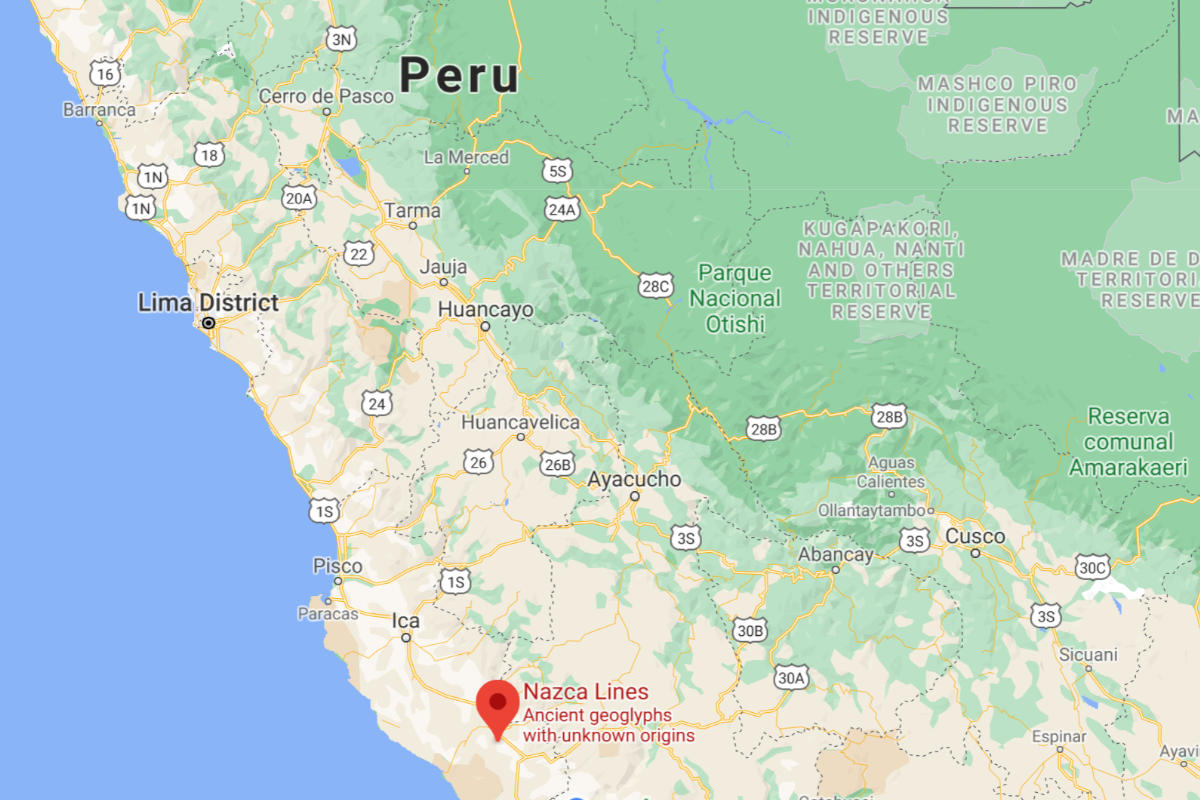
Mapped location of the Nazca Lines. Image generated by Google Maps.
To visit the Nazca Lines you can take a bus from Lima to either Pisco (approx. 4 hours), Ica (approx. 5 hours) or Nazca (approx. 7 hours). These three cities all have daily overflights to the Nazca Lines. Travelers commonly opt for a two day/one night trip to the seaside town Paracas and transfer to Pisco airport from there for their overflight. Others spend the night in the desert oasis of Huacachina and take off to Nazca from Ica. Those interested in history and seeing the actual town of Nazca spend the night in Nazca and take off right from the Nazca airport. While you can organize this independently, a travel agency is easier. They schedule your bus, hotel, private transfers and Nazca Lines overflight so all you have to do is enjoy your Nazca Lines tour .

Photo by Daniella Beccaria of Peru for Less.
There are two primary ways to see the Nazca Lines.
Overflight. The most popular by far is taking an overflight over the lines. This allows you to see the full shapes and really grasp the immensity of the lines. On the flight you’ll see some of the most famous geoglyphs including the hummingbird, dog, hands, astronaut, tree, spider, whale, lizard, shark and more.
Observation tower. For those who don’t like flying or are very prone to motion sickness, the observation tower is another good option. The tower is 42 feet and gives you a glimpse of the tree and hands lines. Though you won’t see the full image, seeing these lines up close in the fresh air provides an intimate experience with the ancient landscape.
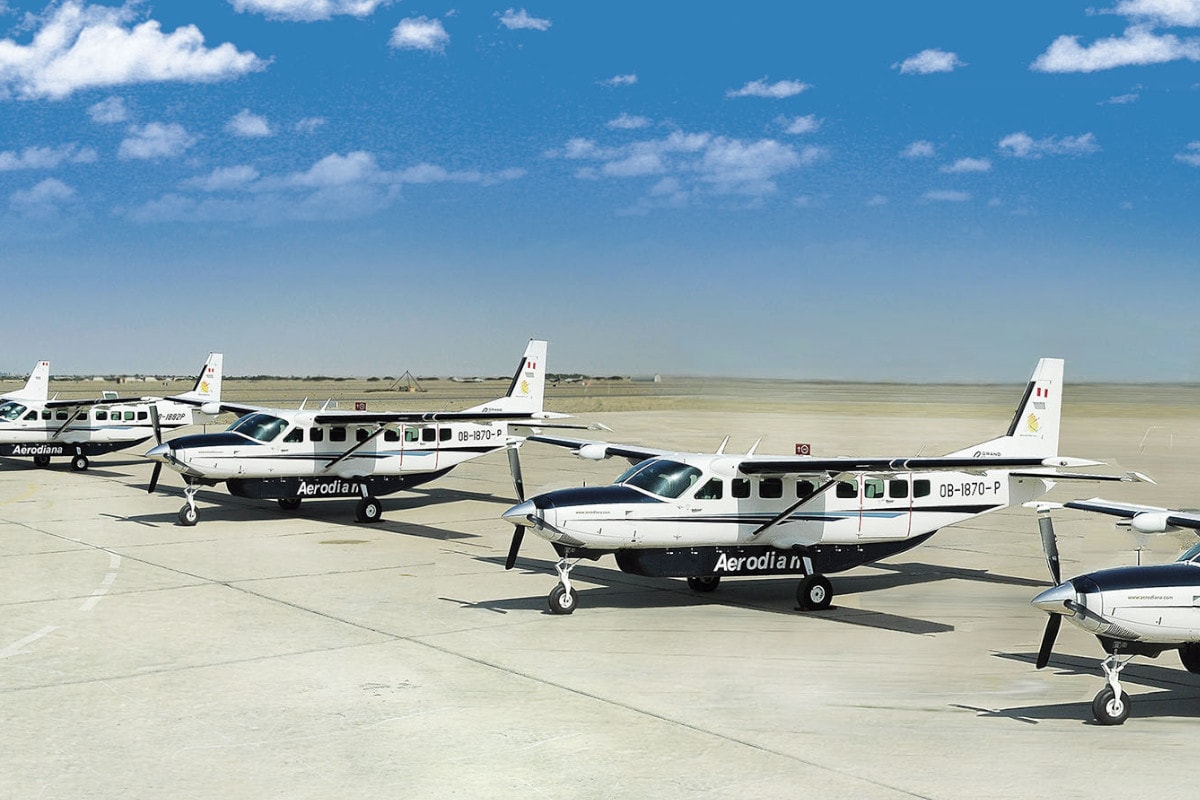
Planes used for flying over the Nazca Lines. Photo by Aerodiana.
The city of Nazca itself is quite fascinating for history lovers. If you make it all the way down to Nazca to see the lines, rather than flying from Pisco or Ica, there are many interesting things to fill up the day or two that you are there.
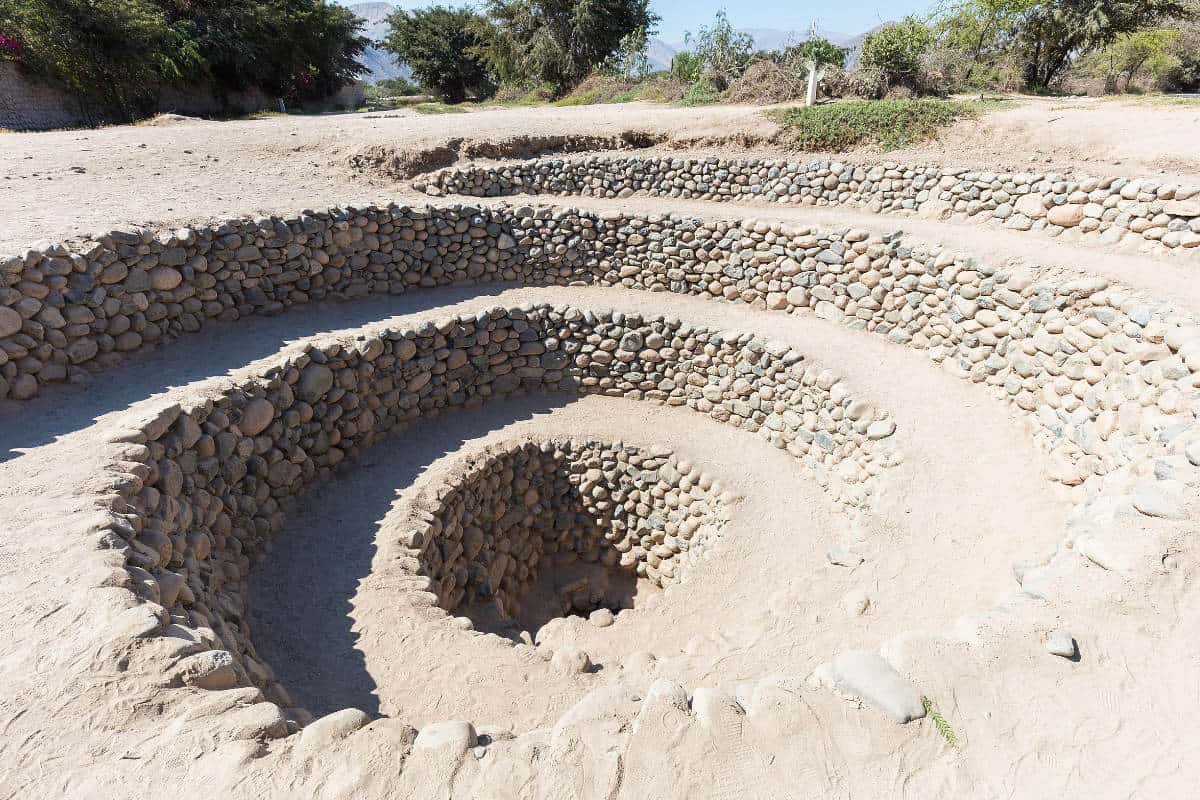
Puquios aqueducts. Image: Acueductos subterráneos de Cantalloc, Nazca, Perú by Diego Delso is licensed under CC-BY-SA.
Ready to visit the enigmatic Nazca Lines? Book your tour to see these and other ancient wonders of Peru.



Email: [email protected]
Sign up to receive our newsletter for great articles, stunning photos, and special deals.